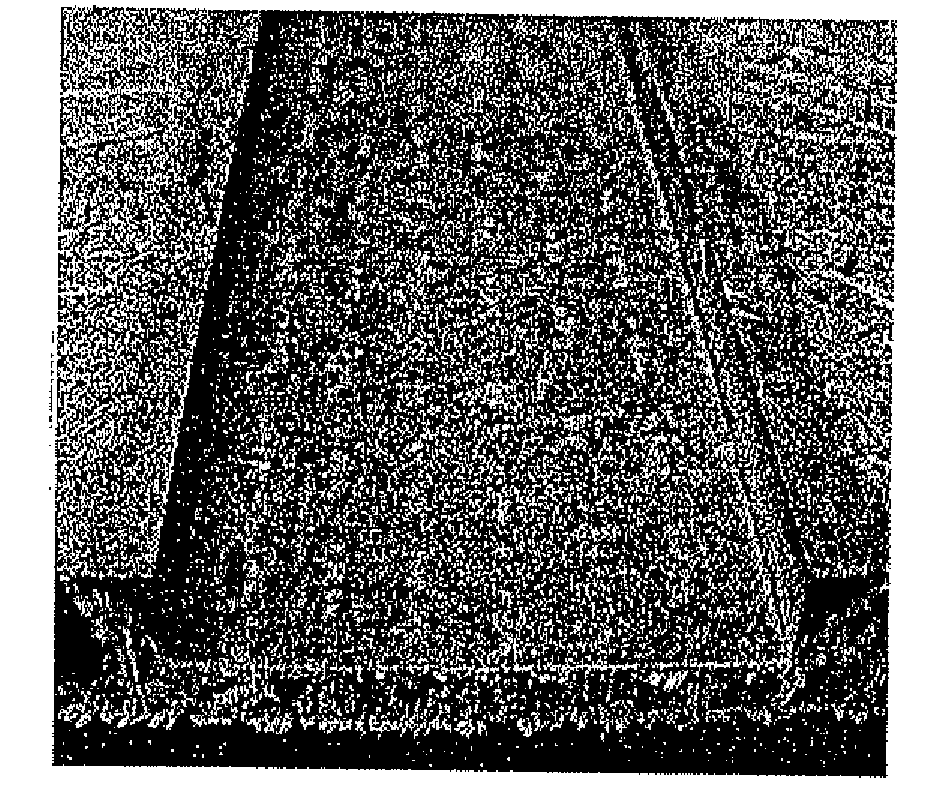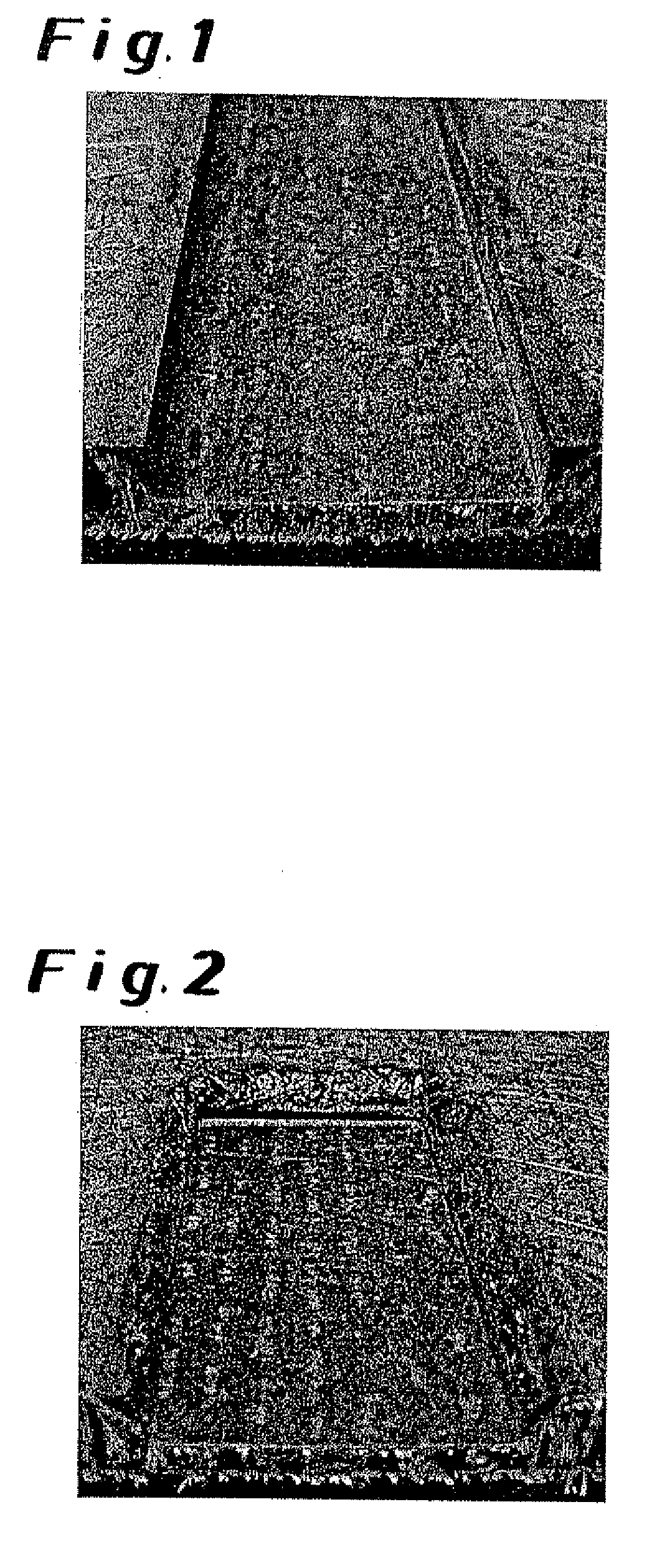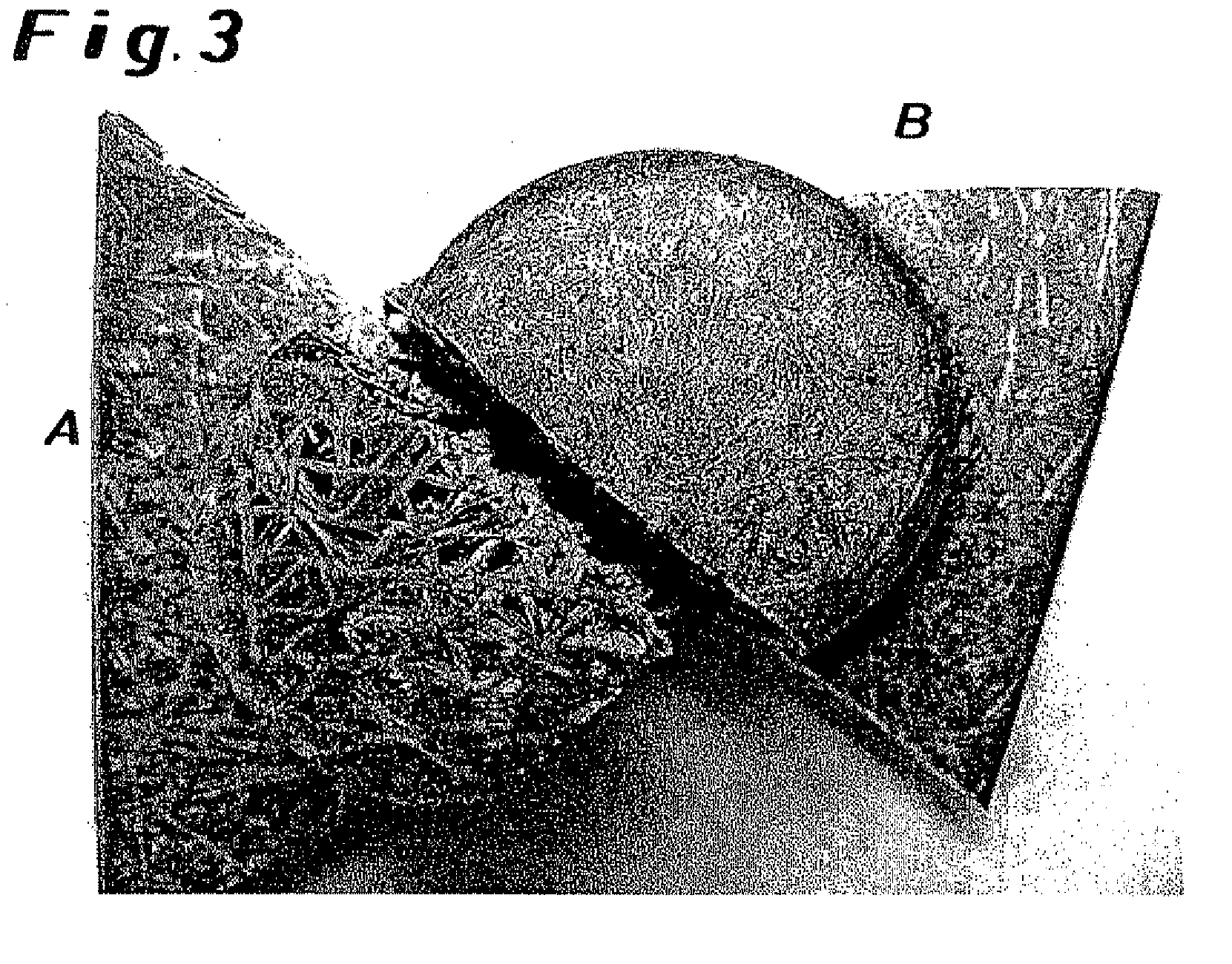Process for the production of polyurethane molded articles
a polyurethane and molded article technology, applied in the direction of superstructure subunits, layered products, construction elements, etc., can solve the problems of poor edge definition of three-dimensional parts, insufficient material infilling, general unsatisfactory edge definition, etc., and achieve good edge definition
- Summary
- Abstract
- Description
- Claims
- Application Information
AI Technical Summary
Benefits of technology
Problems solved by technology
Method used
Image
Examples
example 1
According to the Invention
[0039]The A Component of Formulation 1 was charged with gaseous CO2 using a star-shaped type hollow-shaft stirrer. After charging, a polyol density of 420 kg / m3 was measured by liter gauging.
[0040]Chopped glass fiber were applied in an area weight of 450 g / m2 to both sides of a core layer consisting of a paper honeycomb of corrugated cardboard 5 / 5 type 10 mm thick and spray-coated at room temperature with a total of 450 g / m2 of the polyurethane Formulation 1 charged with CO2.
[0041]This sandwich was placed in a sheet-forming mold, into which a sharp-edged flat piece of steel of size 6×30×300 mm had previously been inserted for the shaping. The sandwich was then compressed to a wall thickness of 9.8 mm, in the mold heated to 130° C., the sandwich having been more strongly compressed to a wall thickness of 3.8 mm in the region of the flat steel insert.
[0042]The more strongly compressed region had a sharp edge definition, as shown in FIG. 1.
example 2
Comparison
[0043]The experiment described in Example 1 was repeated, except that the Formulation was not charged with CO2.
[0044]The more strongly compressed region had a defective edge definition, as shown in FIG. 2.
example 3
According to the Invention
[0045]The polyurethane-forming Formulation 1 was charged as in Example 1 with gaseous CO2.
[0046]Chopped glass fibers were applied in an area weight of 450 g / m2 to both sides of a core layer consisting of a paper honeycomb of corrugated cardboard 5 / 5 type 40 mm thick and spray-coated at room temperature with 550 g / m2 of the polyurethane Formulation 1 charged with CO2. In addition, during the spraying, chopped glass fibers of the type 816, 2400 tex / Mühlmeier, were applied by means of a cutter, type SW 2 / Wolfangel, in the region of the subsequent shaping.
[0047]This sandwich was placed in a sheet-forming mold, that permitted the formation of a 35 mm high, cylindrical dome of 50 mm diameter through a corresponding depression in the upper part of the mold. The sandwich was then compressed to a wall thickness of 17 mm in the mold heated to 130° C., the region of the dome being correspondingly less markedly compressed.
[0048]The dome that was formed had the closed s...
PUM
| Property | Measurement | Unit |
|---|---|---|
| temperature | aaaaa | aaaaa |
| temperature | aaaaa | aaaaa |
| mold temperature | aaaaa | aaaaa |
Abstract
Description
Claims
Application Information
 Login to View More
Login to View More - R&D
- Intellectual Property
- Life Sciences
- Materials
- Tech Scout
- Unparalleled Data Quality
- Higher Quality Content
- 60% Fewer Hallucinations
Browse by: Latest US Patents, China's latest patents, Technical Efficacy Thesaurus, Application Domain, Technology Topic, Popular Technical Reports.
© 2025 PatSnap. All rights reserved.Legal|Privacy policy|Modern Slavery Act Transparency Statement|Sitemap|About US| Contact US: help@patsnap.com



